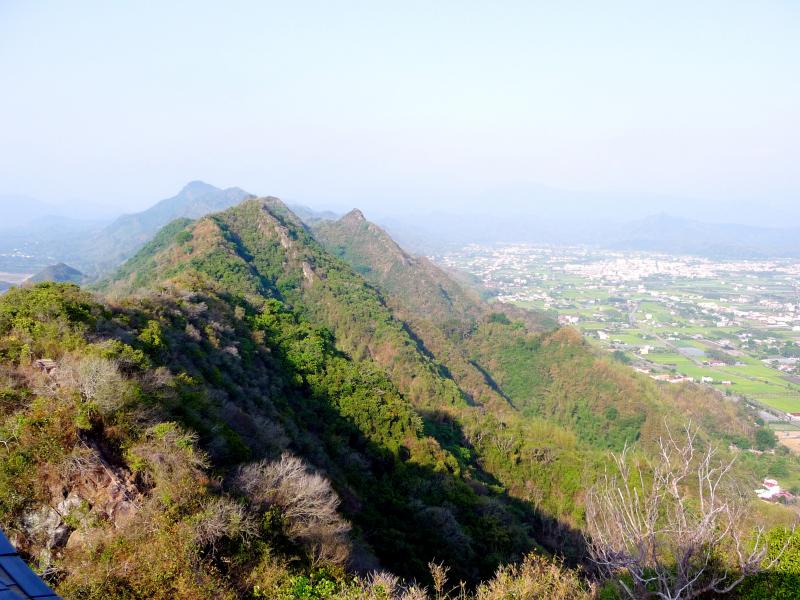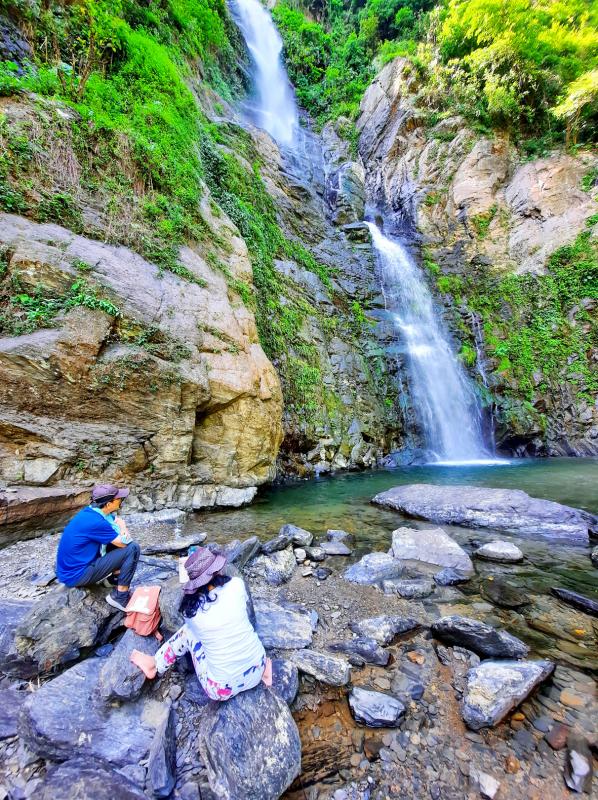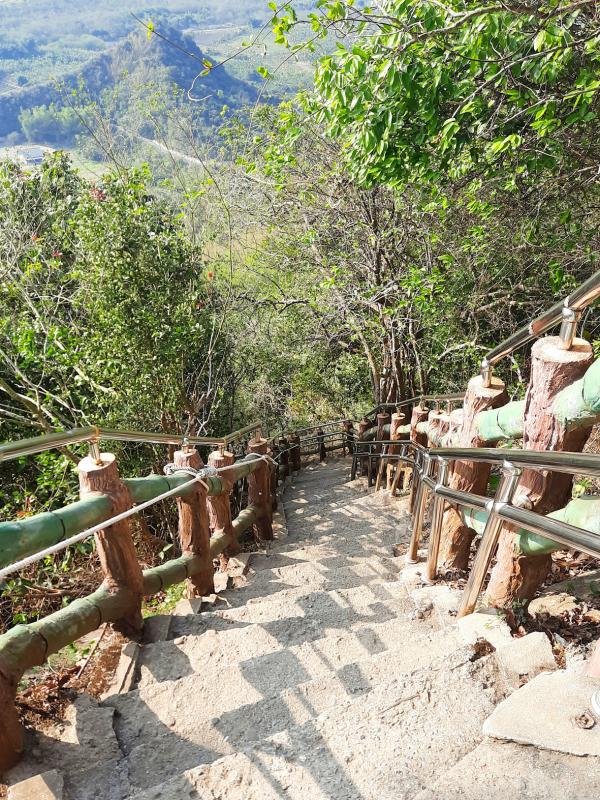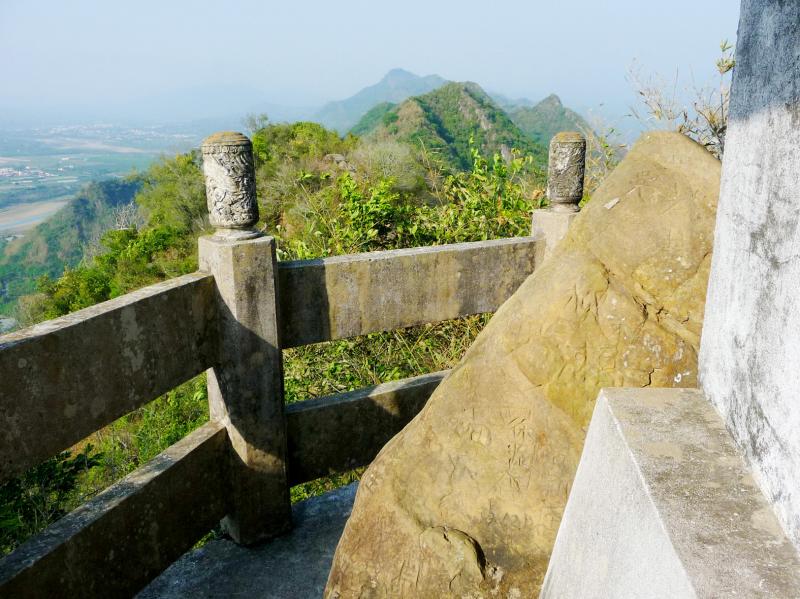Summer isn’t the best time of year for high-altitude treks. At lower altitudes, however, there’s no shortage of short leg-stretchers that’ll get you immersed in nature without leaving you prostrate with heat exhaustion. Here are three in the south.
THE SIRAYA HEARTLAND
If this set of trails has an official name, I’ve not been able to discover it. But it seems that this patch of woodland, 14 km inland from central Tainan, is supervised by Sinhua Forest Area (新化林場), which itself belongs to National Chung Hsing University (國立中興大學). I associate the area with the Siraya people, an indigenous ethnic group still fighting for central government recognition, because one of the community’s leaders owns a chunk of land just north of the trails.

Photo: Steven Crook
I first noticed a trail into the forest here over a decade ago. Since then, the secret has well and truly gotten out. Visiting a few weeks ago, the parking lot held nearly 20 cars and a dozen motorcycles. If you prefer to hike in solitude, arrive when lunchtime is approaching.
The trails feature plenty of steps (a mishmash of cinder blocks, flat stones, wooden planks, old motorcycle tires and recycled rice sacks filled with soil) on which you can get proper exercise. The flatter stretches are simply bare dirt, so I’ve begun to wonder: If even more people come here, will erosion become a problem?
You’ll need two hours to explore every bit of trail. There are very few signs, but this doesn’t seem to matter. I’ve never gotten seriously lost. If you do lose your bearings, you’ll soon find your way back to the road.

Photo: Steven Crook
Despite the highest section of trail being a mere 100m or so above sea level, it doesn’t get unbearably hot in summer, because at least 70 percent of the trail network is shaded. The thick canopy is both evidence of environmental health and one of the hiker’s best friends.
Public transportation:
Eight Green-13 buses per day connect Shing Nan Bus Sinhua Station (興南客運新化站) with Tsu Hui Temple (慈惠堂). Within a minute’s walk of the bus stop, there are two entrances to the trail network on the north side of Tainan Local Road 168; walk southeast (away from Sinhua) to find them.

Photo: Steven Crook
CIWEI MOUNTAIN
For years, this 318m-high peak in Kaohsiung’s Cishan District (旗山) was a source of frustration. I seemed to drive or ride by it every few months, but for one reason or another I never stopped to hike up it. And when the stars recently aligned, I had reason to be even more annoyed.
Approaching from Meinong (美濃), I saw a sign reading “Ciwei Mountain 3” (旗尾山) just before the turnoff onto Kaohsiung Local Road 147, on the other side of the road from the long-shuttered Cishan Sugar Factory (旗山糖廠). Assuming that was the distance to the trailhead, I slowly rode my motorcycle north. Keeping an eye on the odometer, I passed the sign which read “Ciwei Mountain No 3 Hiking Entrance” (旗尾山第三登山口), it being less than 2km from the intersection.

Photo: Steven Crook
Soon enough, I’d gone about 4km, and the road had petered out. I turned back, and parked at the No 3 Entrance, which is — I later checked this carefully — no more than 1.8km from Highway 28. Joining the late afternoon crowd, I made my way up the concrete track.
Within 10 minutes, I came to a viewing platform, after which the trail turned into a strikingly steep concrete stairway. Gradient isn’t the only issue; the ascent is made more challenging by the way in which the stairs list, first to the left and then to the right. Fortunately, the route is lined by sturdy handrails and ropes.
It took me exactly 30 minutes to reach the summit. The structure there isn’t beautiful, but it’s well designed in the sense it provides shade and has benches on which hikers can rest. In this season, when the sky is seldom hazy, it’s possible to face south and see a very substantial chunk of Pingtung County.
Public transportation:
The No 1 Hiking Entrance — which I’ve never hiked from — is less than 1km from Cishan Bus Station (旗山轉運站), where lots of buses from central Kaohsiung and a few from Tainan stop. If you’re on a bus bound for Meinong, get off at Ciwei Elementary School (旗尾國小) on Highway 28.
LIANGSHAN WATERFALL
The first time I hiked up to the triple-level waterfall at Liangshan (涼山) in Pingtung County’s Majia Township (瑪家鄉) there was no ticket booth. Currently, visitors aged between 12 and 65 have to pay NT$80 each on weekends, NT$60 on weekdays. Children, senior citizens and disabled people qualify for half price tickets. If you want to park a car, you’ll need to hand over another NT$50.
I’ve no complaints about having to pay. The revenue seems to be well spent: when I visited on June 19, every part of Liangshan Recreation Area (涼山遊憩區) was spotless, and the 1.5km-long trail which starts near the first waterfall was in excellent condition.
Unless you climb down to the second waterfall — where some regulars spend hours picnicking and swimming in the deep pool, despite bilingual signs telling visitors that the latter activity is prohibited — there are no challenging gradients.
When approaching the last (and most impressive) waterfall, take care as the boulders can be slippery. There’s a reward once you get close to the pool, even if you don’t dip so much as a toe in the water: The cascade pushes out a non-stop and delightfully cool misty breeze, however hot the day is.
Public transportation:
Each day, three #511 buses connect Sinzuoying (新左營), the combined TRA-HSR station in Kaohsiung, with Liangshan Recreation Area (涼山遊憩區). The weekend and weekday schedules are different, so plan with care. If you’re willing to walk 1.6km to/from Road 187, you could arrive or leave by a #8231, #8232, or #8233 bus to/from Pingtung City’s bus station.
Steven Crook has been writing about travel, culture and business in Taiwan since 1996. He is the author of Taiwan: The Bradt Travel Guide and co-author of A Culinary History of Taipei: Beyond Pork and Ponlai.

Last week Joseph Nye, the well-known China scholar, wrote on the Australian Strategic Policy Institute’s website about how war over Taiwan might be averted. He noted that years ago he was on a team that met with then-president Chen Shui-bian (陳水扁), “whose previous ‘unofficial’ visit to the US had caused a crisis in which China fired missiles into the sea and the US deployed carriers off the coast of Taiwan.” Yes, that’s right, mighty Chen caused that crisis all by himself. Neither the US nor the People’s Republic of China (PRC) exercised any agency. Nye then nostalgically invoked the comical specter

Relations between Taiwan and the Czech Republic have flourished in recent years. However, not everyone is pleased about the growing friendship between the two countries. Last month, an incident involving a Chinese diplomat tailing the car of vice president-elect Hsiao Bi-khim (蕭美琴) in Prague, drew public attention to the People’s Republic of China’s (PRC) operations to undermine Taiwan overseas. The trip was not Hsiao’s first visit to the Central European country. It was meant to be low-key, a chance to meet with local academics and politicians, until her police escort noticed a car was tailing her through the Czech capital. The

April 15 to April 21 Yang Kui (楊逵) was horrified as he drove past trucks, oxcarts and trolleys loaded with coffins on his way to Tuntzechiao (屯子腳), which he heard had been completely destroyed. The friend he came to check on was safe, but most residents were suffering in the town hit the hardest by the 7.1-magnitude Hsinchu-Taichung Earthquake on April 21, 1935. It remains the deadliest in Taiwan’s recorded history, claiming around 3,300 lives and injuring nearly 12,000. The disaster completely flattened roughly 18,000 houses and damaged countless more. The social activist and

Over the course of former President Ma Ying-jeou’s (馬英九) 11-day trip to China that included a meeting with Chinese Communist Party (CCP) leader Xi Jinping (習近平) a surprising number of people commented that the former president was now “irrelevant.” Upon reflection, it became apparent that these comments were coming from pro-Taiwan, pan-green supporters and they were expressing what they hoped was the case, rather than the reality. Ma’s ideology is so pro-China (read: deep blue) and controversial that many in his own Chinese Nationalist Party (KMT) hope he retires quickly, or at least refrains from speaking on some subjects. Regardless